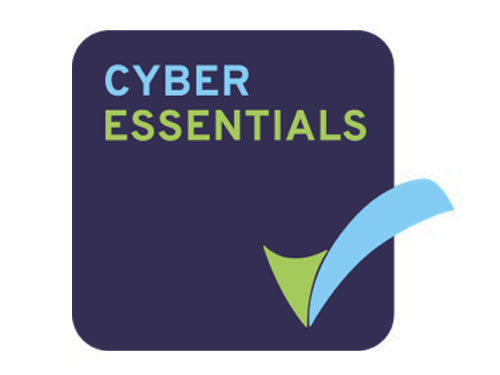Respondent, employment, and industry demographics
Whatever the Microsoft Cloud role, use our guide to benchmark your salary or contact rate, or to uncover what you should be paying employees in your team.
Who are our respondents, and where are they from?
Nationality
Americas
Middle East and Africa (MEA)
Asia–Pacific (APAC)
Gender identity
-
 Men 83%
Men 83% -
 Women 14%
Women 14% -
 Non-binary 1%
Non-binary 1%
2% of respondents prefer not to specify their gender.
Age*
| 18-24 years old | 2% |
| 25-29 years old | 9% |
| 30-34 years old | 15% |
| 35-39 years old | 16% |
| 40-44 years old | 17% |
| 45-49 years old | 15% |
| 50-54 years old | 12% |
| 55-59 years old | 8% |
| 60+ years old | 6% |
*These results were only taken from those respondents that specified their age.
Ethnicity
| White or Caucasian | 50% |
| Asian | 17% |
| Black, African, or Caribbean | 9% |
| Hispanic or Latino | 4% |
| Mixed race or multiracial | 2% |
| Middle Eastern or North African | 2% |
| Arab | 2% |
| Sub-Saharan African | 2% |
| Another ethnic group | 4% |
8% of respondents prefer not to specify their ethnicity.
Do you have a disability, or are you neurodivergent?
92%
No
4%
Yes
4% of respondents prefer not to specify whether they have a disability.

Education level
Some high school, no diploma, GCSEs, or equivalent
1%
High school graduate, diploma, A-level, or equivalent
7%
Some college credit, no degree
4%
Trade/technical/vocational training or qualification
2%
Associate degree
4%
Bachelor's degree
43%
Master's degree
33%
Doctorate or professional degree
2%
2% of respondents prefer not to specify their educational attainment.
Of those who continued with further education and went on to undertake a degree, the main fields of study were:
41%
Information Technology
29%
Computer Science
23%
Software Engineering
16%
Business Administration
13%
Accounting
Tenure
Respondents have stayed in each role for an average of six years throughout their career.
Years of experience
Overall work experience in the tech industry
On average, respondents have 19 years’ experience in the technology industry in total.
Let’s examine that in more detail:
| 0-5 years | 13% |
| 6-10 years | 13% |
| 11-15 years | 19% |
| 16-20 years | 16% |
| 21-25 years | 16% |
| 26-30 years | 10% |
| 31+ years | 12% |
| 0-5 years | 13% |
| 6-10 years | 13% |
| 11-15 years | 19% |
| 16-20 years | 16% |
| 21-25 years | 16% |
| 26-30 years | 10% |
| 31+ years | 12% |
Working experience with Microsoft Cloud in a commercial environment
On average, our respondents have:
7 years
of experience working with Microsoft Dynamics 365
3 years
of experience working with Microsoft Power Platform
4 years
of experience working with Microsoft Azure
5 years
of experience working with Microsoft 365
Let’s delve into that further:
Microsoft Dynamics 365
Microsoft Power Platform
Microsoft Azure
0-2 years
34%
3-5 years
38%
6-8 years
17%
9-11 years
9%
12+ years
2%
Microsoft 365
0-1 years
8%
2-3 years
22%
4-5 years
27%
6+ years
43%
What Microsoft Cloud products do our respondents specialize in?
Dynamics 365
35%
Microsoft 365
23%
Azure
21%
Power BI
6%
SharePoint
5%
Power Platform
4%
PowerApps
1%
Other
5%
‘Other’ responses include .NET and SQL server.
Employment status of respondents
What are respondents' professional levels?
Which industries are represented?
‘Other’ responses include health and life sciences, government, and food and beverage.
What size are the organizations represented?
| Self-employed | 11% |
| 1-10 employees | 5% |
| 11-50 employees | 14% |
| 51-200 employees | 13% |
| 201-500 employees | 11% |
| 501-1,000 employees | 8% |
| 1,001-5,000 employees | 12% |
| 5,001-10,000 employees | 8% |
| More than 10,000 employees | 14% |
| Not sure | 4% |
| Self-employed | 11% |
| 1-10 employees | 5% |
| 11-50 employees | 14% |
| 51-200 employees | 13% |
| 201-500 employees | 11% |
| 501-1,000 employees | 8% |
| 1,001-5,000 employees | 12% |
| 5,001-10,000 employees | 8% |
| More than 10,000 employees | 14% |
| Not sure | 4% |
What are the business models of the organizations represented?
6%
Start-up organization
6%
Microenterprise
26%
SMB (Small and Medium-sized Business)
20%
SME (Small and Medium-sized Enterprise)
40%
Large enterprise organization
2%
Other




